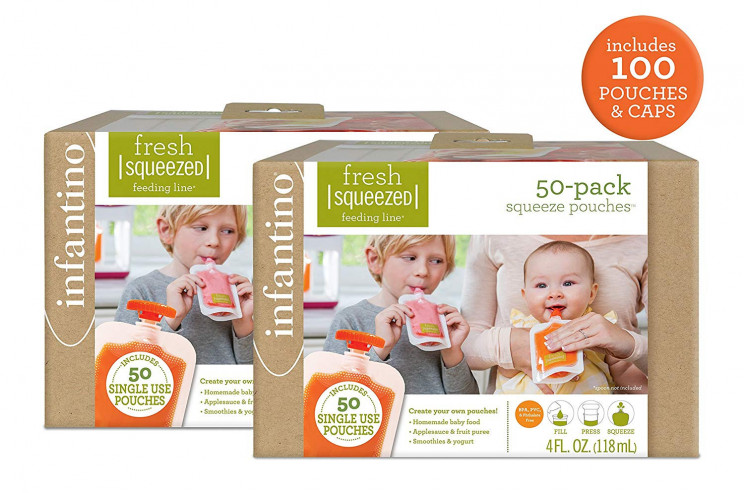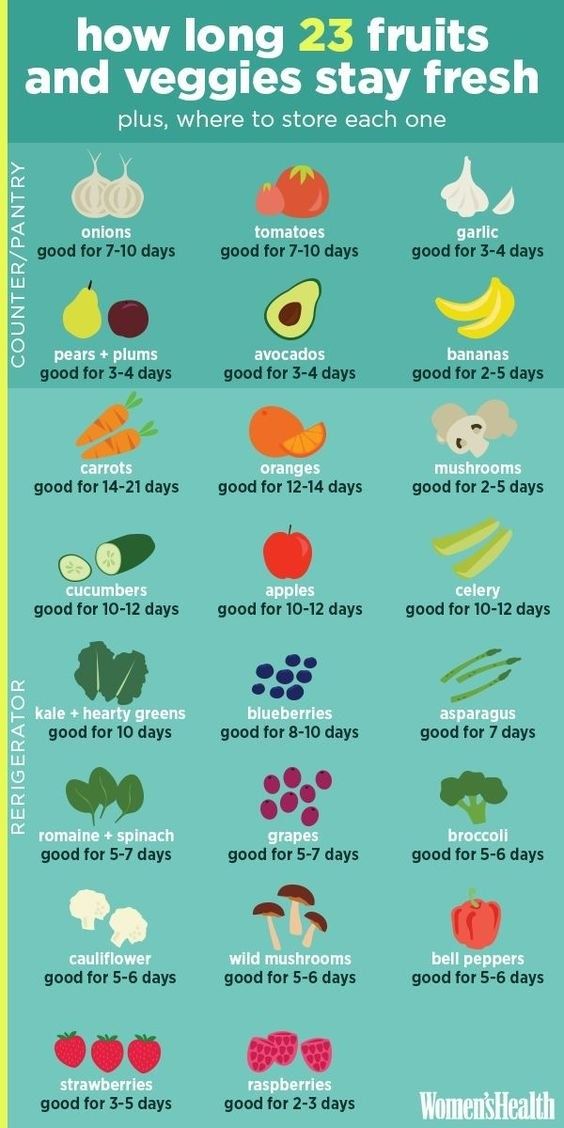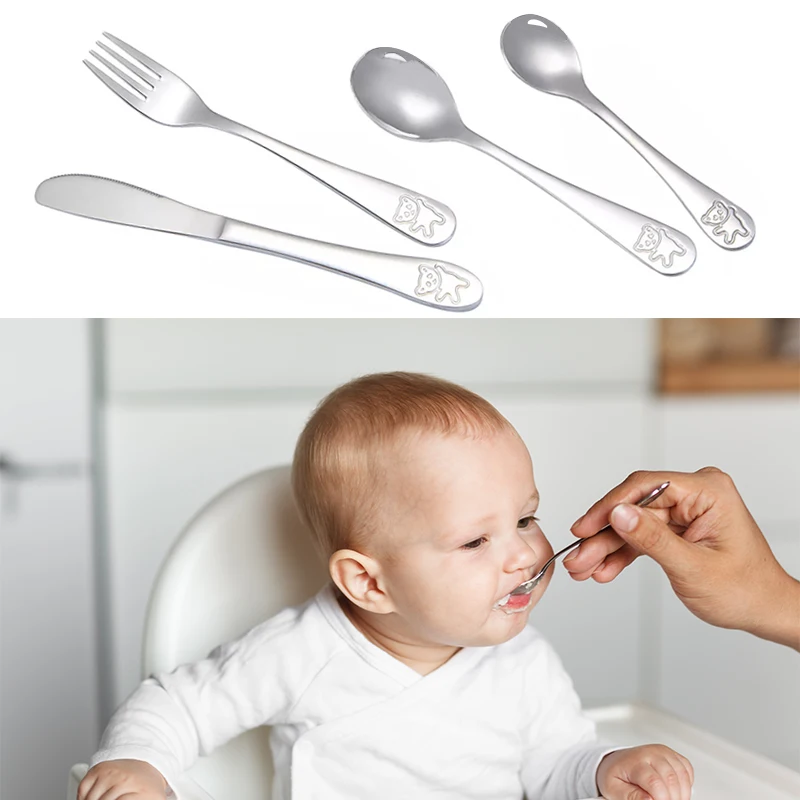Okra baby food
Can Babies Eat Okra
Okra, also known as ladies’ fingers is a flowering plant valued for its edible green seed pods. Its origin is debated, but it is supported to be found in West African regions. The plant is grown in subtropical and tropical regions worldwide.
The pods are usually cooked, pickled, eaten raw or used as ingredients in salads. Okra becomes slimy when in contact with water or when being cooked. A trick to de-slime okra is to cook it with another acidic ingredient, like tomatoes. Okra seeds are pressed into edible okra oil, having a pleasant taste and smell, and being high in unsaturated fats.
Okra is mostly composed of water, but it has protein, carbs, dietary fibers and some fat too. Okra is high in vitamins K, B1, B9 and C, but it also has significant amounts of vitamins A, B2, B3 and E, magnesium, calcium, phosphorus, potassium, iron and zinc. Okra has solanine, which can be toxic and cause joint pain, just like the same compound in potatoes, tomatoes, artichokes, eggplant and in blueberries. Okra prevents cancer, helps fight diabetes, lowers the risks of heart diseases, strokes and obesity. The high level of vitamin K plays an important role in bone formation and blood clotting.
Buying & Storing Okra
When buying fresh okra, it is important to look for velvety and young pods, which should not be longer than 10cm, because longer ones are usually tough and woody. Okra turns slimy and rots pretty quickly if you wash it, so wash it only if you plan to use it.
When Can Okra Be Introduced Into A Baby’s Diet?
Parents can introduce okra into their babies’ diet when they start eating solid food at the age of 6 months old. The dietary fibers help prevent constipation and keep a healthy digestive system.
Easy Okra Bake
Ingredients: 2 cups of sliced okra, 1 large and chopped tomato, 1 small chopped onion, 1 small chopped red bell pepper, ¾ cup fresh whole wheat breadcrumbs, ½ cup of grated Cheddar cheese.
Preheat the oven to 200 °C.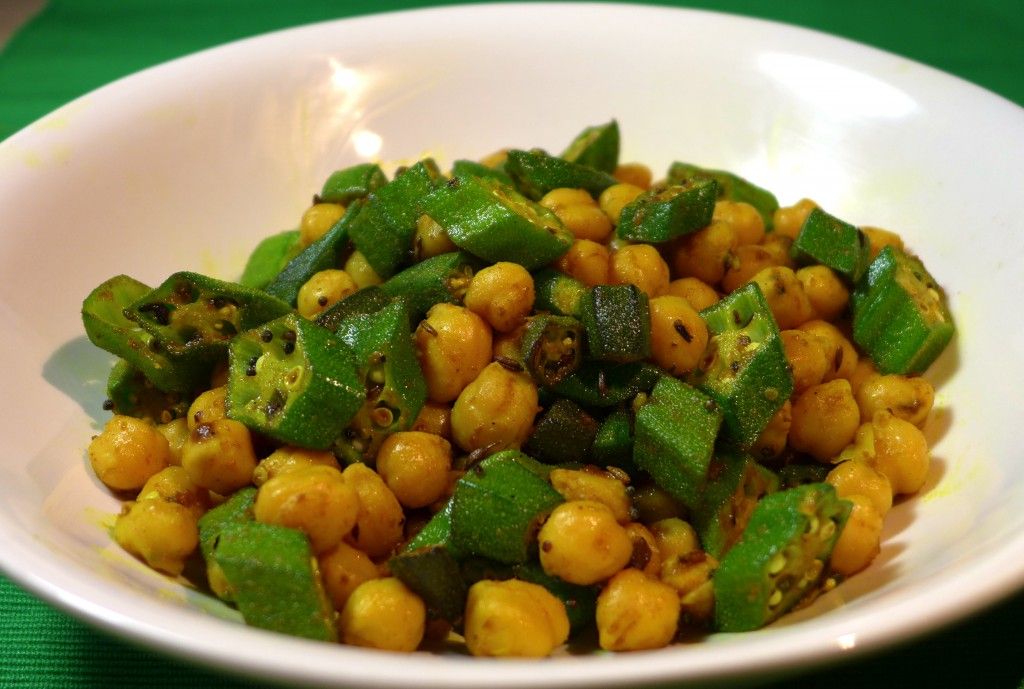 Grease an oven proof dish and spread the okra in a layer. Sprinkle the okra with a little olive oil and add the other vegetables. Cover loosely with foil and bake until tender, approximately for 45 minutes. Mix the breadcrumbs with the grated Cheddar cheese. Remove the foil and tip with the breadcrumbs cheese mixture. Put back into the oven and bake until the top is golden brown and the cheese is melted.
Grease an oven proof dish and spread the okra in a layer. Sprinkle the okra with a little olive oil and add the other vegetables. Cover loosely with foil and bake until tender, approximately for 45 minutes. Mix the breadcrumbs with the grated Cheddar cheese. Remove the foil and tip with the breadcrumbs cheese mixture. Put back into the oven and bake until the top is golden brown and the cheese is melted.
FAQ
What is okra?
Okra, also known as ladies’ fingers is a flowering plant valued for its edible green seed pods.
How healthy is okra?
Okra prevents cancer, helps fight diabetes, lowers the risks of heart diseases, strokes and obesity. The high level of vitamin K plays an important role in bone formation and blood clotting. The dietary fibers help prevent constipation and keep a healthy digestive system.
When can you start giving okra to your baby?
Parents can introduce okra into their babies’ diet when they start eating solid food at the age of 6 months old.
The risks of giving okra to your baby?
Okra has solanine, which can be toxic and cause joint pain, just like the same compound in potatoes, tomatoes, artichokes, eggplant and in blueberries.
Okra couscous - Family Food on the Table
Okra couscous may be a bit of a strange combination, but it’s a baby food favorite around here!
In my homemade baby food making journey, I got to the point on my list where okra was in the next batch of vegetables I wanted to introduce to M. “Hmm, okra,” I thought.
I love okra. I love it roasted and I love it in a quick sauté with tomatoes and onions and peppers. My husband makes a shrimp and okra gumbo that’s delicious.
It’s a very Southern food and it’s oh so good. You really don’t have to fry it to make it yummy.
But for a baby? You have to puree it. And that gets a bit messy.
It’s slimy. The various ways I eat it, it’s not slimy at all. But once you cook it until soft and puree it? Yes.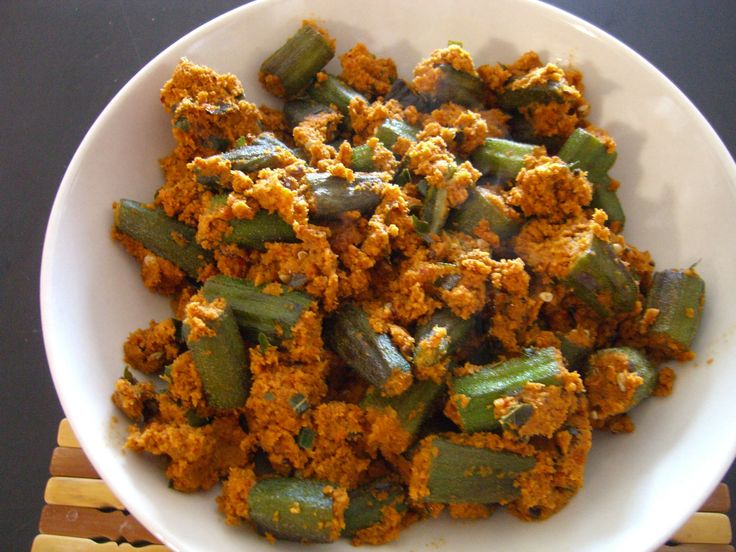 Slime central.
Slime central.
I wouldn’t have been able to spoon that into her little mouth in a million years all by itself, so I decided to mix it with some whole wheat couscous. It absorbs right into the okra puree and they mix up to a great spoonable solution.
Except for the “eww” factor.
I’ll be the first one to tell you I think this is a little icky. It’s the only thing I have ever made for my babies that I did not want to eat myself.
So why would you do it? Why would you make this green goo and then serve it to your sweet baby?
Because she’ll grow up loving it and when she’s 2 ½, and you have friends over for an afternoon party, and she asks what’s for dinner, and you bend down and tell her “okra couscous,” and she proceeds to yell, “Yippee! Okra couscous! Okra couscous! My favorite! Yummy, yummy, yummy! Thank you Mommy!,” You will derive a strange satisfaction from the looks coming your way from all across the room as the other parents shake their heads in wonder.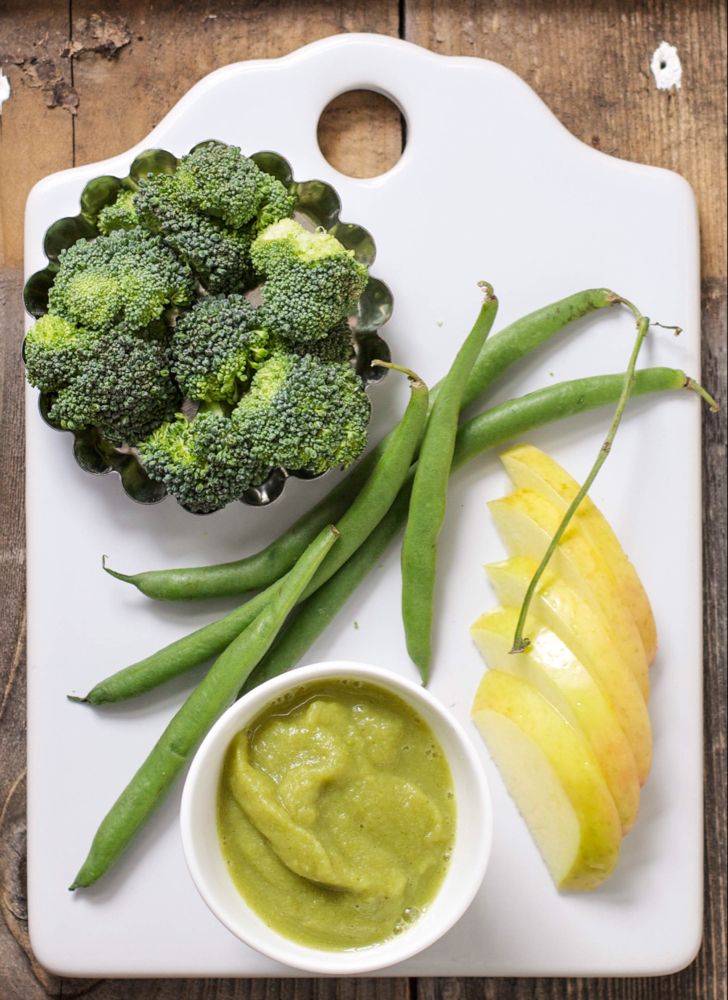 And you’ll give a shy shrug and turn away.
And you’ll give a shy shrug and turn away.
They love it. I always thought maybe it was just M having a weird food moment, but J devours bowls of this stuff, too.
I still make it for them, and M is almost 4. She literally will jump up and down when I tell her that’s what is for dinner. It makes me happy, but to be honest, it also creeps me out a little bit.
Okra couscous. Who knew?!
Enjoy!
Kathryn
Prep Time 5 minutes
Cook Time 10 minutes
Total Time 15 minutes
Ingredients
- 1 cup whole wheat couscous
- 1 1/2 cups water, divided
- 1 16-oz. bag frozen cut okra
Instructions
Prepare the couscous:
- Bring 1 cup of water to a boil in a small pot.
- Pour in couscous and gently swirl so that all of the couscous is covered by the water.
- Put the lid on the pot, turn off the burner and remove from the heat.
- Let it sit for 5 minutes, then uncover, fluff with a fork and put into a medium bowl.
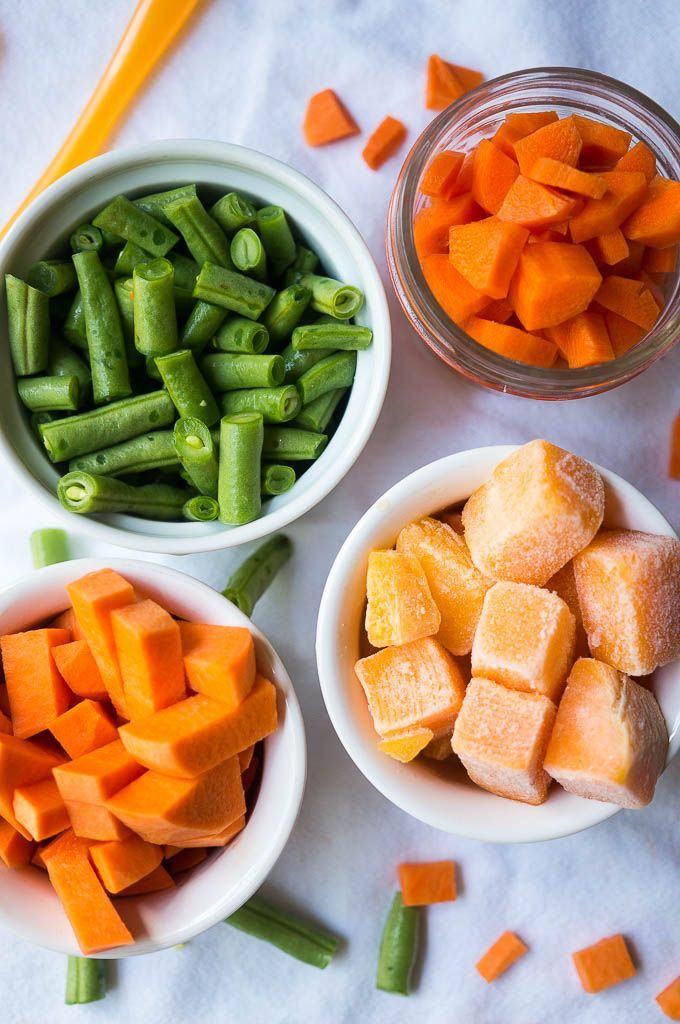
Prepare the okra:
- Bring 1/2 cup of water to a boil in a large pot.
- Add the bag of frozen okra.
- Wait for the water to return to a boil, then cover, reduce the heat and let simmer for 8-10 minutes, until very tender.
Put it all together:
- Transfer the cooked okra to a blender — or use an immersion blender — and puree until smooth.
- Pour the okra over the couscous and mix very well to combine.
- Let cool then serve to your little one and watch in amazement as they take it down.
Notes
You can store leftover okra couscous, once cooled, in the refrigerator for up to 5 days. Reheat in the microwave and serve.
You can also freeze extras. Store in a freezer-safe bag or container for up to 3 months. Defrost in the refrigerator overnight, then heat in the microwave and serve.
Nutrition Information:
Yield:
8Serving Size:
1Amount Per Serving: Calories: 60Total Fat: 0gSaturated Fat: 0gTrans Fat: 0gUnsaturated Fat: 0gCholesterol: 0mgSodium: 7mgCarbohydrates: 13gFiber: 2gSugar: 1gProtein: 3g
description of the cultivation and preparation of the vegetable; its benefits and harms
Contents
- 1 Description
- 2 Varieties of okra
- 3 Useful properties
- 4 Use in cooking
- 5 How to cook?
- 5.
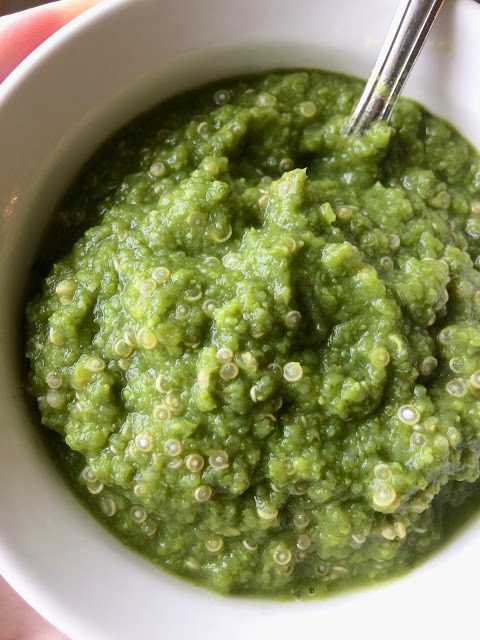 1 How to preserve?
1 How to preserve?
- 5.
- 6 Okra Benefits and Treatment
- 7 Okra Harm and Contraindications
- 8 Growing: Planting and Care
- 8.1 Product Photos
- 8.2 Similar Foods
- 8.3 Nutritional value
- 8.4 Vitamins
- 8.5 Minerals
Calories: 25 kcal.
Energy value of the product Okra:
Proteins: 2 g.
Fats: 0.1 g.
Carbohydrates: 3.83 g. This vegetable is also called gombo, okra and ladies' fingers. The fruits have 5-7 faces, inside of which there is a large number of small seeds (see photo). They reach an average length of 25 cm. The surface of the okra is covered with fluff, which must be removed before use so that it does not cause any allergic reaction when eaten. The fruits are bright green. The taste of this plant is somewhat similar to asparagus and eggplant.
The birthplace of these fruits has not yet been established. This may be West Africa or India, since in this area you can find a large number of cultivated and wild plants of this type.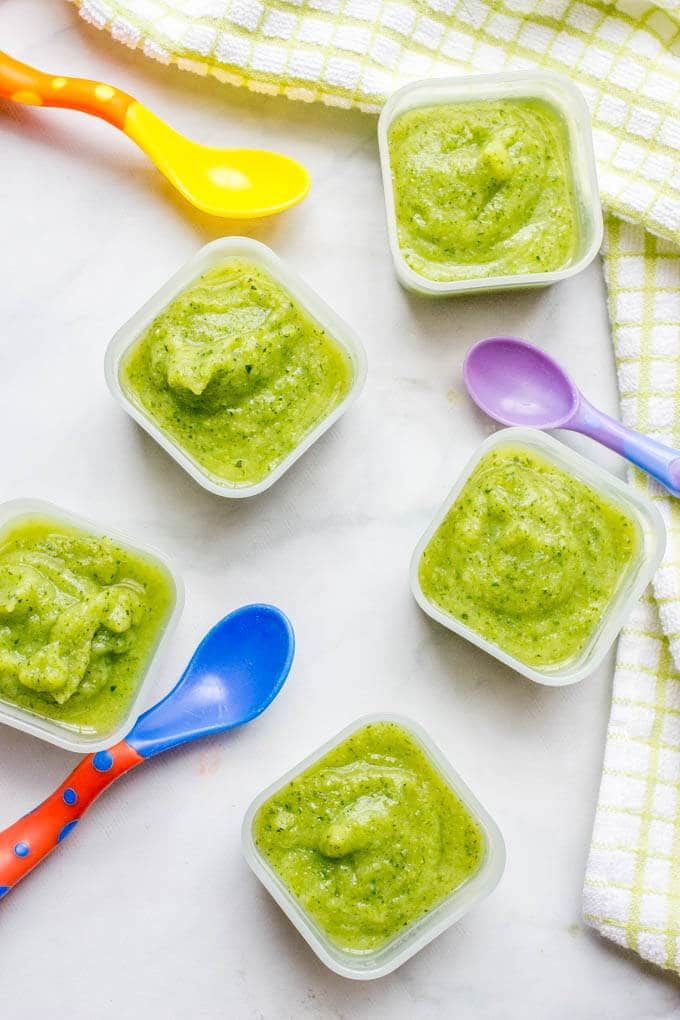
Since okra contains a lot of slime, to get rid of it, you need to add something sour during cooking, such as vinegar or tomatoes.
Unfortunately, okra fruits are not popular in our area.
Varieties of okra
There are several varieties of okra most in demand in Russia, which differ in shape and size of the fruit:
- Ladyfingers, also known as okra, are grown for their edible seed pods. Such a plant reaches a length of about one meter. After planting and before the first harvest, about a hundred days should pass. The stem of the variety "Lady's fingers" is completely covered with sparse hairs. Visually, the fruit of the plant resembles capsicum with hairs. To get rid of unwanted hairs, it is enough to wipe the fruit with a hard cloth. The fruits are hidden in the axils of the leaves. It is noteworthy that this variety is resistant to hot conditions and drought. This plant can be harvested twice a year if the climate is warm.
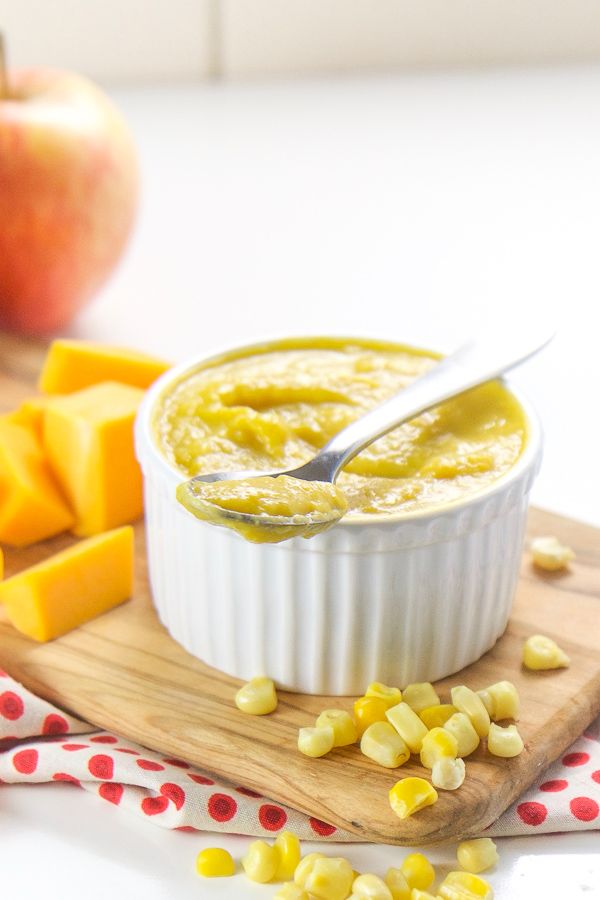 The fruits of this variety of okra are best consumed when still unripe, as they contain a sticky substance that is used to thicken dishes. Also, the plant is put in vegetable salads, soups and side dishes. It can be dried, canned or frozen. Variety "Ladyfingers" is great for people who adhere to dietary nutrition, as well as for patients with atherosclerosis.
The fruits of this variety of okra are best consumed when still unripe, as they contain a sticky substance that is used to thicken dishes. Also, the plant is put in vegetable salads, soups and side dishes. It can be dried, canned or frozen. Variety "Ladyfingers" is great for people who adhere to dietary nutrition, as well as for patients with atherosclerosis. - Low growing oak forest. The height of its stem is about eighty centimeters. At the bottom of the stem, the leaves are five-lobed, and at the top they are dissected. The flowers are yellow and medium in size (diameter - nine centimeters). As soon as the fruit ripens, it acquires a dark green color. Its length varies from eighteen to twenty centimeters. If such a variety of okra is grown for planting future seeds, then up to eight fruits can form on the plant, and each will contain about fifty seeds.
- Mid-season oak forest. Once the plants are planted, it takes about sixty-five days to collect the first set of ovaries.
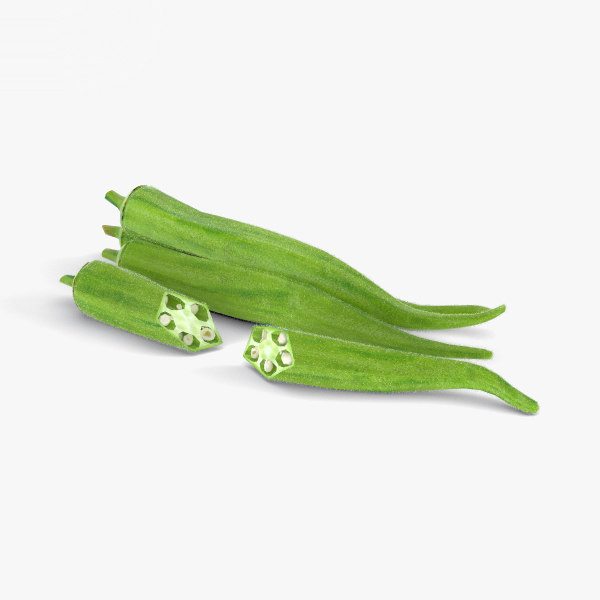 Seeds ripen within one hundred and twenty days. This variety of okra bears fruit for about thirty days. During this period, the harvest can be harvested seven or nine times. The variety "Oakwood mid-season" should be planted only in open ground. The ovaries themselves can be consumed by people who adhere to a dietary diet.
Seeds ripen within one hundred and twenty days. This variety of okra bears fruit for about thirty days. During this period, the harvest can be harvested seven or nine times. The variety "Oakwood mid-season" should be planted only in open ground. The ovaries themselves can be consumed by people who adhere to a dietary diet. - Medium-sized flute. The height of the stem varies from one hundred fifteen to one hundred and twenty centimeters. The inflorescences are yellow in color and relatively small in size (about seven centimeters). The fruit itself is green in color and reaches a length of about twenty centimeters. If the plant is grown for planting seeds, then about ten pieces can grow on okra, and the seeds inside the fruit will be olive in color.
Mid-season flute. Once the plants are planted, it takes about sixty-eight days to collect the first set of ovaries. Seeds ripen within one hundred and twenty-five days. This variety of okra bears fruit for about thirty-four days. During this period, the crop can be harvested up to nine times.
During this period, the crop can be harvested up to nine times.
Useful properties
Numerous useful properties of okra are possible due to its rich vitamin and mineral composition. So, the high content of folic acid makes okra a product that is recommended for pregnant women. Such a source of vitamin B9much more useful than synthetic vitamins.
Okra contains vegetable mucus - dietary fibers that have the ability to regulate blood sugar levels, which means that the consumption of such a product is indicated for people suffering from diabetes. And okra has the ability to re-absorb water, remove excess cholesterol, toxins and bile from the body.
Okra has substances that improve the functioning of the digestive tract. Regular consumption of this vegetable prevents constipation and bloating, and it also has the ability to treat stomach ulcers. Okra is able to increase the growth of beneficial bacteria in the small intestine called probiotics.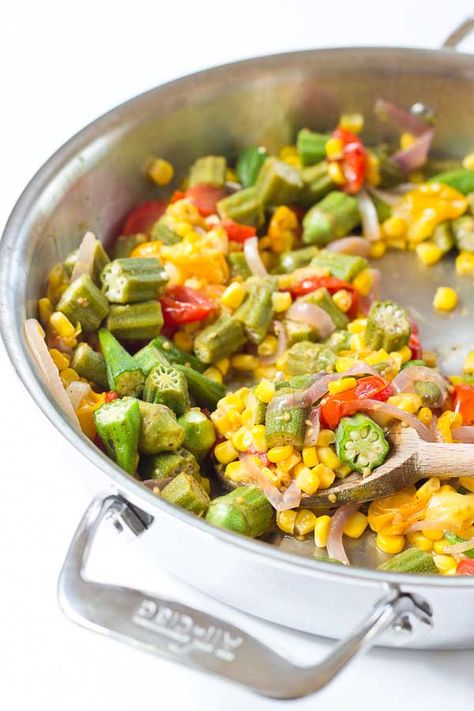
This vegetable can be consumed during diets, as it belongs to low-calorie foods. The fruits contain substances that strengthen the walls of blood vessels, and therefore the vegetable can be used in dietary nutrition for atherosclerosis.
A huge amount of useful substances makes it possible to use okra not only for healing the body, but also for cosmetic purposes. Boiled vegetables are used to make masks that improve the condition of the hair, make it stronger and shinier. The okra extract in the cream will help to clear the skin of acne and also help to get rid of uneven skin.
Fruits help improve health during sore throats, depression and chronic fatigue.
Culinary Uses
Okra can be used in cooking and can be cooked in many different ways, such as salting, marinating, frying, stewing, steaming and deep-frying. In addition, the fruits can be consumed raw.
This vegetable can easily replace courgettes in ratatouille and stews.
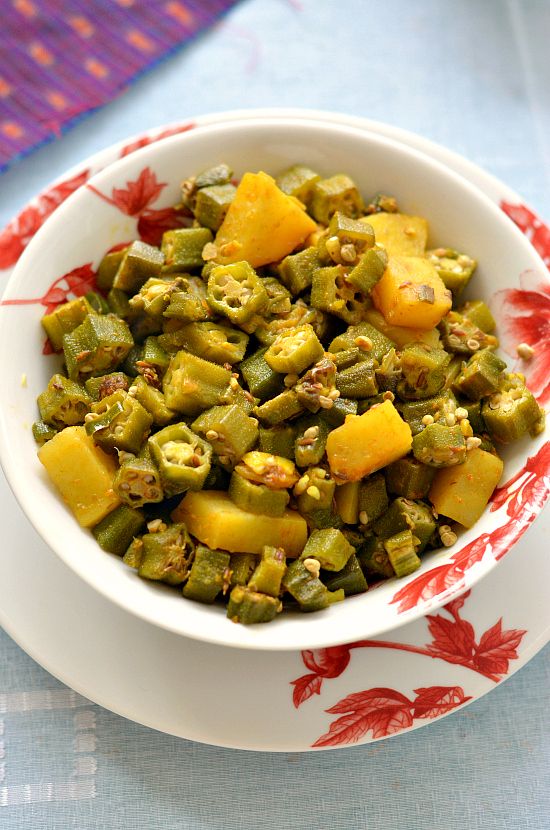
Okra can be used to make a variety of side dishes, as well as add it to salads and soups. These fruits are perfectly combined with Provence oil and various spices, which improves the taste of dishes made on the basis of an exotic vegetable.
Okra can be dried and frozen in order to be able to use the fruit all year round.
In addition to the pods, young leaves can also be eaten. They are added to salads and soups. The seeds are also edible. They are roasted and used to make a bitter-tasting drink that is somewhat similar to coffee. In addition, oil with a specific taste and smell is made from okra seeds. And yet, young seeds of this vegetable can replace green peas.
How to cook?
To understand how to cook okra, you first need to understand some of its features.
The appearance of an exotic vegetable resembles a green pepper, only with hairs on the outside and seeds inside. When buying such a fruit in a store, you should not choose its large size.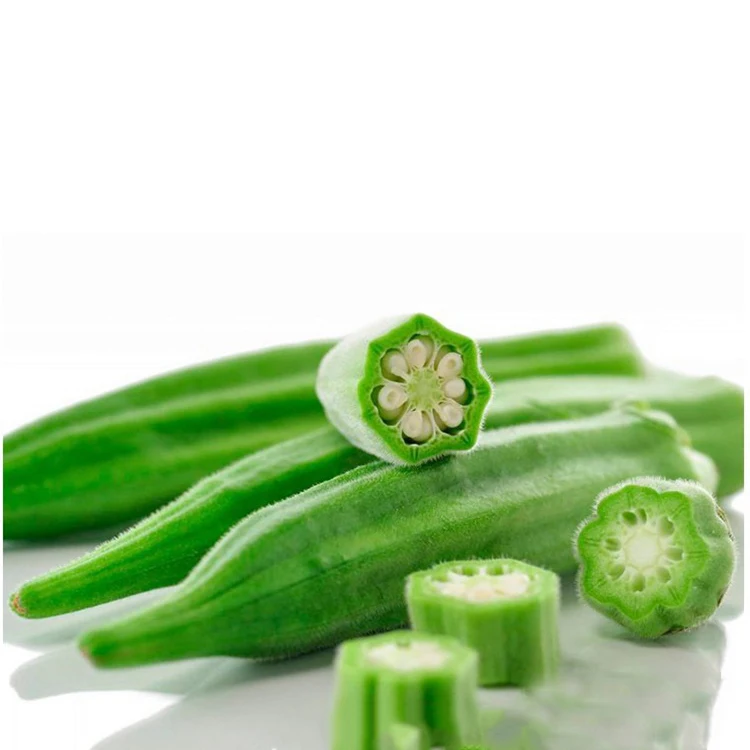 It is better that its length does not exceed ten centimeters, otherwise you risk buying an old and overripe fruit.
It is better that its length does not exceed ten centimeters, otherwise you risk buying an old and overripe fruit.
Wash the okra thoroughly before cooking, wipe it with a hard cloth to remove hairs, cut off the stalk.
To prevent the pods from turning dark, do not use cast-iron cookware for cooking, and in order to prevent the okra from spreading during cooking, do not stir it with a spoon and subject it to a long heat treatment.
When preparing sauces or soups, the mucus that this exotic vegetable secretes can become an important advantage. It will give the necessary viscosity to the prepared dish. If the appearance of viscosity in the dish is undesirable, okra should be fried or, thinly sliced, cooked until the mucus has completely evaporated.
How to preserve?
There are several ways to preserve okra. It can be closed in jars both separately and combined with other vegetables.
You must remember the main thing - okra must be young and, preferably, recently plucked from the garden.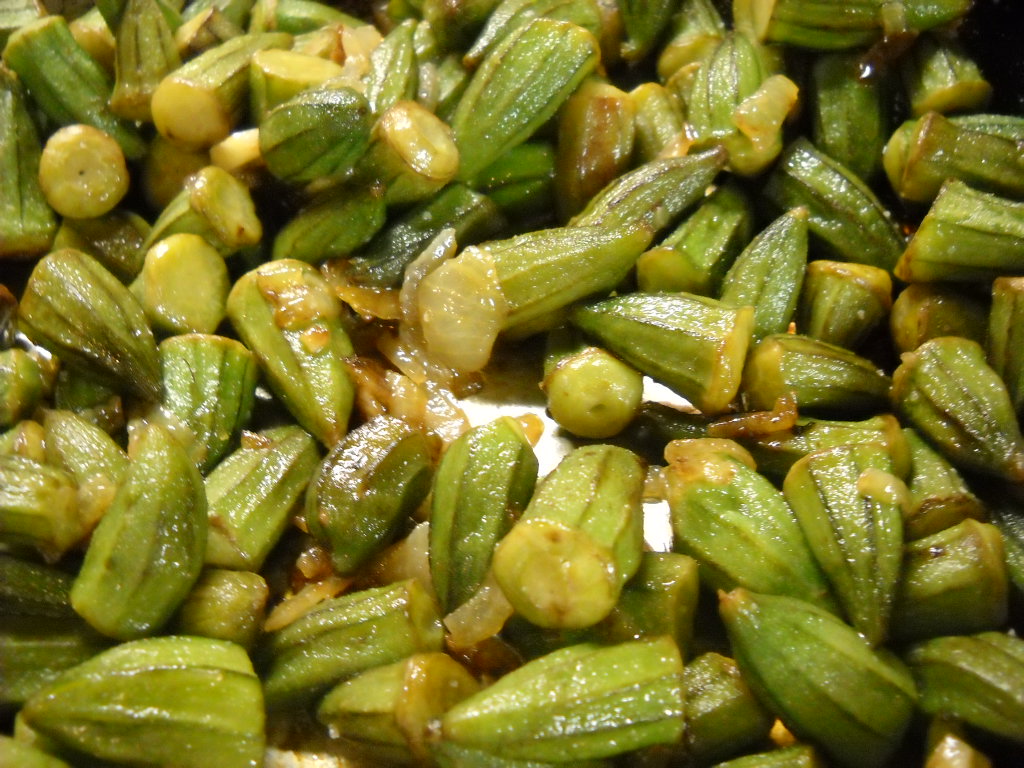 You should not preserve a vegetable if it has lain in the refrigerator for several days.
You should not preserve a vegetable if it has lain in the refrigerator for several days.
If the okra is cut crosswise into small pieces, it will look very nice in a jar, like little stars. You can also preserve it whole: you only need to cut off the tip of the stem.
Before canning okra, it is necessary to prepare the vegetable or vegetables if you choose to combine okra with anything else. First of all, wash all the ingredients well, prepare the spices and marinade, which should boil over low heat before distributing it into jars. Sterilize the jars, put all the ingredients in them, pour the boiling marinade over and pour it into a saucepan. Do this procedure several times. At the very end - pour the okra chopped and put into jars with the finished marinade and tightly close with sterilized lids.
Benefits and treatment of okra
The benefits of okra have been proven after a number of experiments, which confirmed that the fruits can prevent the development of various types of cancer, and they also reduce the risk of developing cataracts and diabetes.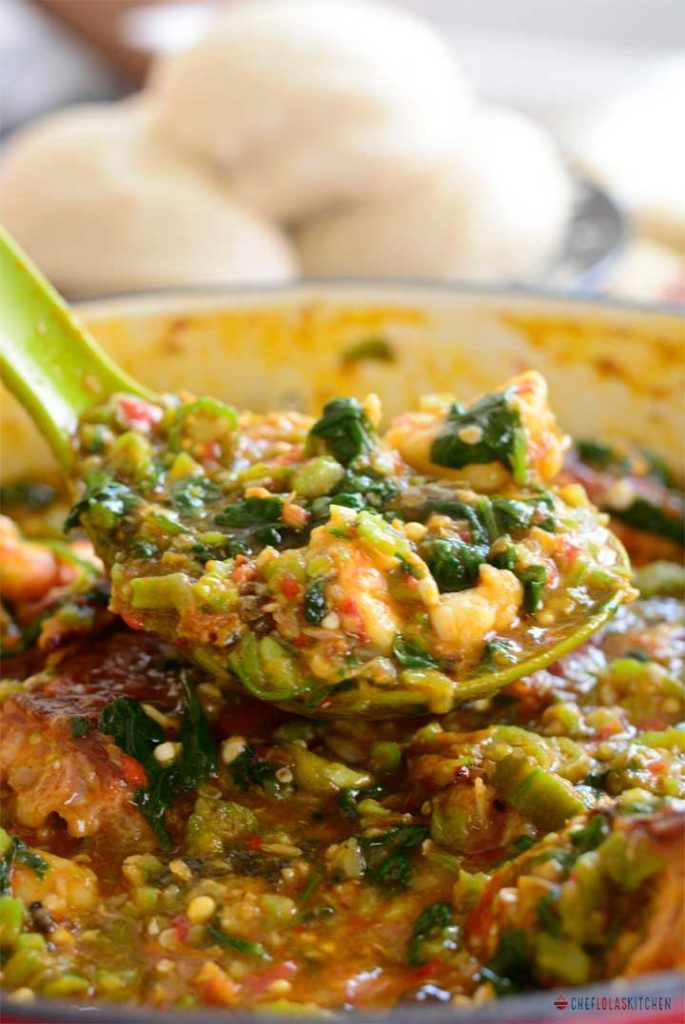 In addition, due to the rich composition, many doctors recommend these fruits to patients who have recently undergone surgery.
In addition, due to the rich composition, many doctors recommend these fruits to patients who have recently undergone surgery.
It has been proven that the vegetable is able to cope with many problems that cause impotence.
In folk medicine, okra is used to treat many diseases associated with the organs of the respiratory and digestive systems. Basically, decoctions are prepared from it and infusions are made.
| Disease | Method of treatment |
| 2 atherosclerosis | For the treatment of this disease of non -traditional medicine, they recommend serving about two hundred grams of bamia a week. |
| Colds and severe coughs | For the treatment of the upper respiratory tract, take two tablespoons of ground okra roots and pour them into three glasses of water (need warm and boiled). |
Also, the use of pure okra or dishes with the addition of this vegetable is useful for people with diabetes, diarrhea, constipation. In addition, okra helps to increase male potency.
Below is a video about an amazing plant - okra.
Harm of okra and contraindications
Harm of okra can bring with individual intolerance to the product. There are no other contraindications for this product.
Growing: planting and care
Okra is a thermophilic plant that should not be grown outdoors unless you are in the southern region. This plant needs certain soil and conditions for its maturation.
The soil must be fertile and fertile. Fertilize it for okra should be in the fall. While digging, add humus, compost and superphosphate to the soil.
While digging, add humus, compost and superphosphate to the soil.
First, you need to grow seedlings by planting okra seeds immediately in separate containers, as this plant does not like transplants, around the beginning of May. In order for them to quickly sprout and grow into good seedlings, you need to soak the seeds in water for a day and observe the temperature regime throughout the entire growing period. The temperature in the room should be 20-25 degrees.
Planting okra in a greenhouse or greenhouse starts after about 45 days, at a distance of 30-60 cm from each other and 50-90 cm for tall varieties.
Care of the plant is as follows: it is necessary to regularly water the okra with water, weed the weeds and hill the bushes, and also feed them. Fertilize the plant before flowering with mineral fertilizers, and when the fruits appear, use potassium nitrate.
My favorite okra, step by step recipe for 155 kcal, photo, ingredients
Add the recipe
Recipe
Advertising
Viderait on the topic
Recipe from Julia Vysotskaya
lentil and coriander
Julia Vysotskaya
Laza 9000. from zucchini with ricotta and pesto sauce
Fatty cottage cheese can be used instead of ricotta.
Julia Vysotskaya
Advertising
Video recipes on the topic
Recipe by Yulia Vysotskaya
Pasta with vodka
Well, of course, not for children, although no one will get drunk: vodka does not feel like vodka, but it turns out such an original bitter-island taste, and this bitterness seems to me beautiful. I tried
Yulia Vysotskaya
Recipe from Yulia Vysotskaya
Thai cauliflower
Yulia Vysotskaya
advertising
Tatyana
Preparation
25 minutes 9000 Many people ask themselves the question, what is okra. Okra is a vegetable crop of the Malvaceae family, also known as gombo, okra, ladies' fingers. Her homeland is East Africa, unripe fruits of okra are used as vegetables for food.
To the cookbook
With pictures No pictures
To favorites
With pictures No pictures
Subscribe to our Yandex.Zen channel!
Ingredients
500 g okra
1 medium onion
2-3 cloves garlic
3 pcs. tomatoes
3 tbsp. l. lemon juice
8 tbsp. l. olive. oils
salt to taste
50 ml boiling water
photo reports to the recipe0
Add a photo
There are no photos of this recipe yet
Add a photo
Step by step recipe with photo
Finely chop the onion.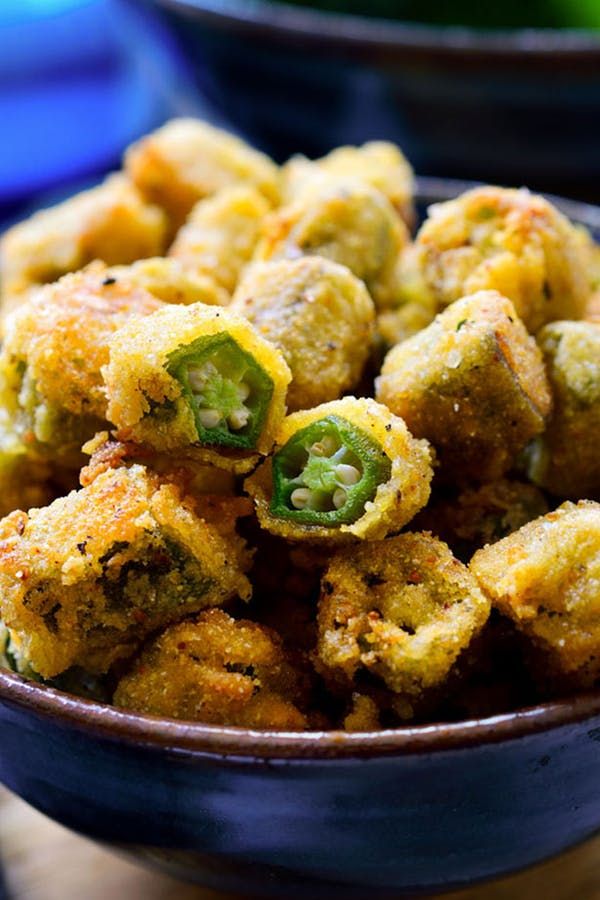

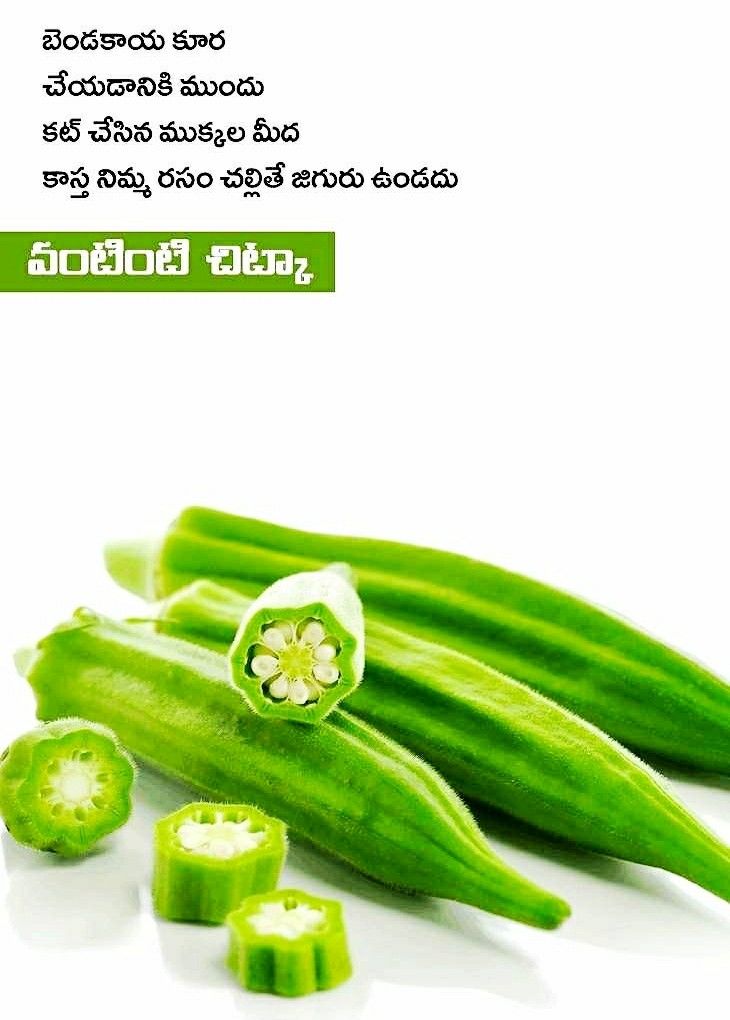 The infusion should stand for about one hour, then it must be filtered and a little honey added (for sweetness). Take an infusion of one tablespoon about eight times a day until the disease disappears completely.
The infusion should stand for about one hour, then it must be filtered and a little honey added (for sweetness). Take an infusion of one tablespoon about eight times a day until the disease disappears completely. 